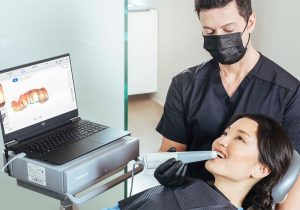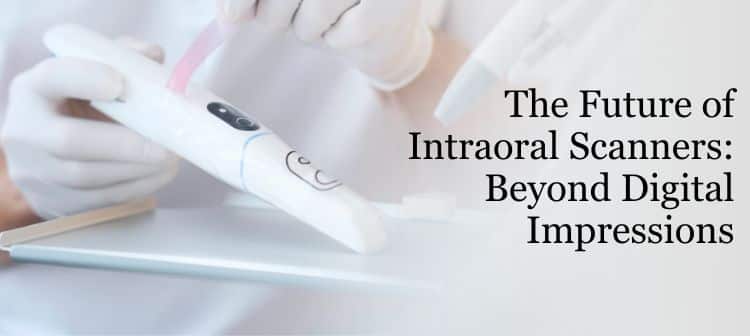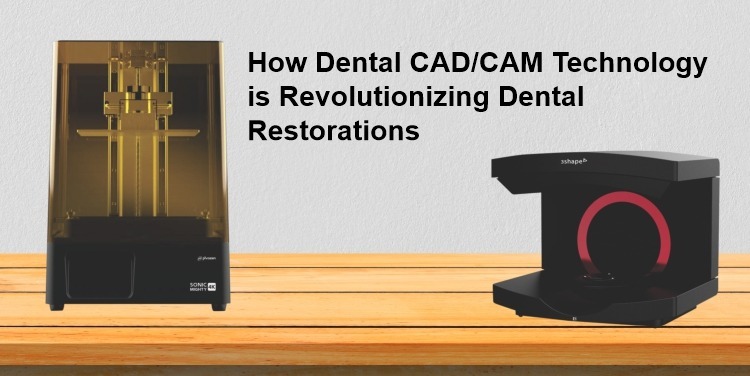The Evolution of Dental Impression Systems: From Analog to Digital
The Evolution of Dental Impression Systems: From Analog to Digital
Dental impressions are essential in modern dentistry because they serve as the foundation for precise treatment planning and excellent patient care. These imprints record the distinctive curves of a patient’s teeth and oral structures, allowing dentists to construct precise models and restorations. Dental impression systems have evolved dramatically over the years, moving from classic analogue approaches to the realm of digital dentistry.
This blog delves into the intriguing history of dental impression systems, charting the analogue to digital shift and highlighting the breakthroughs that have transformed the field. We’ll look at the advantages of digital dental impressions, the importance of precision in dental moulding, and the new efficient impression procedures. We will also talk about the importance of dental practice innovation and the future of dental impressions.
In the following sections, we will look at the significant milestones in the growth of dental impression systems, as well as the move from analogue to digital approaches and how this has resulted in increased accuracy and efficiency. We will also introduce and discuss a cutting-edge product, the Shining 3D Aoralscan 3 Intraoral Scanner, and its role in the digital impression process.
Join us as we examine the revolutionary potential of dental technology breakthroughs and the limitless possibilities that digital dental impressions provide. Let us all embrace the future of dentistry and its wonderful impact on patient care.
The Evolution of Dental Impression Systems: From Analog to Digital
Dental impressions are an essential aspect of dental practice, acting as a critical step in treatment planning and the manufacture of various tooth restorations. Dental impression systems have seen a remarkable shift over the years, progressing from traditional analogue approaches to the domain of digital dentistry. This innovation has transformed the way dental impressions are taken, giving dentists more precise, efficient, and patient-friendly options.
Analog Dental Impressions: The Traditional Approach
Dental impressions were traditionally taken using analogue methods. To capture the appropriate dental anatomy, dental putty or alginate materials were prepared, loaded into trays, and inserted in the patient’s mouth. While these approaches were widely employed and produced satisfactory results, they were not without limits.
One of the drawbacks of analogue impressions was the possibility of distortion or inaccuracy during the setting process, which could lead to decreased precision in the final dental restorations. Furthermore, patients frequently complained of discomfort and choking, making the procedure unpleasant for both the dentist and the patient. Furthermore, the traditional analogue technique was time-consuming, necessitating numerous phases and manual labour to create real stone models.
The Digital Revolution in Dental Impressions
The introduction of digital technology has altered the world of dentistry, especially the method of obtaining dental impressions. Digital dental impressions, also known as intraoral scans, have emerged as a game changer in the sector, providing various benefits over previous analogue approaches.
Intraoral scanners, which are handheld devices that capture very accurate 3D images of the patient’s oral cavity, are used in the digital dental impression process. These scanners build a virtual representation of the patient’s teeth and surrounding tissues using modern optical technology and powerful software algorithms. Physical stone models are no longer required because the resulting digital impressions can be viewed, modified, and saved electronically.
Benefits of Digital Dental Impressions
The transition from analogue to digital dental impressions has resulted in numerous advantages for both dental practitioners and patients.
One notable advantage of digital impressions is their increased precision. Intraoral scanners produce highly detailed and precise digital images, enabling for better treatment planning and dental restorative production. The digital data is easily altered and shared with dental laboratories, resulting in restorations that are nearly identical to the patient’s natural dentition.
Another advantage is a better patient experience. Digital impressions eliminate the need for the painful and filthy materials used in traditional impressions, reducing patient discomfort and gag reflex dramatically. Patients may now relax and enjoy the impression process, increasing their overall pleasure with their dental appointments.
Digital dental impressions can also save you time. The digital approach eliminates the need for physical transportation of impressions to dental laboratories, resulting in faster restoration turnaround times. Dentists and dental technicians can now communicate online, resulting in speedier and more effective manufacture of dental prosthesis.
Intraoral Scanners: The Future of Dental Impressions
Intraoral scanners, which capture accurate and detailed 3D images of the oral cavity, are at the forefront of digital dental impressions. These mobile devices have grown in sophistication, with improved functions and capabilities.
The Shining 3D Aoralscan 3 Intraoral Scanner stands out in the field as a unique and cutting-edge product. This scanner, which is outfitted with cutting-edge technology, provides remarkable scanning speed, accuracy, and ease of use. Its ergonomic form promotes patient comfort, and its high-resolution imaging catches even the most minute features of oral anatomy.
The Aoralscan 3 intraoral scanner integrates seamlessly with digital workflows, allowing dentists to efficiently obtain digital impressions and transmit the data to dental laboratories or CAD/CAM systems for the fabrication of restorations. With its user-friendly interface and comprehensive software, the Aoralscan 3 empowers dental professionals to provide precise and customized treatment solutions to their patients.
In conclusion, the evolution of dental impression systems from analog to digital has revolutionized the field of dentistry. Digital dental impressions offer improved accuracy, enhanced patient comfort, and streamlined workflows. With the introduction of advanced intraoral scanners like the Shining 3D Aoralscan 3, dentists can embrace the future of dental impressions and provide their patients with exceptional care and treatment outcomes.

The Impact of Digital Dental Impressions
Digital dental impressions have had a huge impact on dentistry, resulting in considerable improvements in accuracy, efficiency, and patient happiness. In this section, we will look at the main advantages and disadvantages of utilising digital dental impressions over traditional analogue methods.
Improved Accuracy and Precision
The increased accuracy and precision of digital dental impressions is one of their key benefits. Dentists can capture very detailed and precise 3D images of the patient’s mouth cavity using digital scanning technologies. This enables a more precise portrayal of the dental anatomy, resulting in better-fitting restorations and better treatment outcomes. Digital impressions avoid the mistakes and distortions that can arise with traditional impression materials, resulting in a more perfect fit of crowns, bridges, and other dental restorations.

Enhanced Patient Experience
When compared to traditional impressions, digital dental impressions provide a more comfortable experience for patients. The days of messy and uncomfortable imprint materials are long gone. Patients with digital scanning simply have a small handheld intraoral scanner passed over their teeth and gums. This non-invasive procedure is quick and painless, and it removes the gag reflex that traditional impression trays might cause. Digital impressions lead to increased patient satisfaction and compliance with dental treatments by providing a better patient experience.
 Streamlined Workflows and Time Efficiency
Streamlined Workflows and Time Efficiency
Digital dental impressions greatly improve workflow efficiency in dental practices. Traditional analogue imprints necessitate the pouring of stone models and actual shipping to dental laboratories, both of which might take time. With digital imprints, the collected data can be quickly electronically communicated to dental laboratories or CAD/CAM systems, lowering turnaround times and allowing for speedier treatment planning and restoration production. This efficiency benefits both the dentist and the patient by saving time and allowing for faster treatment completion.
Enhanced Communication and Collaboration
Digital dental imprints allow dental practitioners, laboratories, and patients to communicate and collaborate more effectively. Virtual consultations, remote treatment planning, and real-time collaboration between dentists and dental technicians are all possible because to the digital data that can be easily shared and viewed remotely. This seamless information sharing enables a more precise and efficient treatment process, lowering the likelihood of misinterpretation and enhancing overall patient care quality.
 Dental Practice Innovation: The Future of Digital Impressions
Dental Practice Innovation: The Future of Digital Impressions
The introduction of digital dental impressions has resulted in a wave of innovation and transformative developments in the area of dentistry. In this section, we will look at how digital impressions have changed dental practice and prepared the path for the future of dentistry.
Customized Treatment Planning
Digital dental impressions give dentists a wealth of accurate and complete data, allowing for more precise treatment planning. Dentists can analyse digital impressions using new software tools, assess the patient’s oral condition, and provide personalised treatment plans. This customisation guarantees that patients receive care that is suited to their specific needs, leading in better treatment outcomes and patient satisfaction.
Integration with CAD/CAM Technology
Digital dental impressions smoothly connect with Computer-Aided Design and Computer-Aided Manufacturing (CAD/CAM) technology, offering up a new world of dental restoration possibilities. The digital impressions serve as the foundation for precisely designing and constructing crowns, bridges, veneers, and other dental prosthesis. CAD/CAM technology enables the production of highly accurate and aesthetically pleasing restorations, eliminating the need for human corrections and improving the overall quality and longevity of dental treatment.
Improved Patient Experience
By removing the discomfort and difficulty associated with traditional impression materials, digital dental impressions have improved the patient experience. Patients no longer have to endure the terrible taste, odour, and gag response induced by gooey imprint trays. Instead, with digital impressions, individuals can have a more comfortable and pleasurable experience, increasing their overall happiness and willingness to seek dental care.
Enhanced Workflow Efficiency
The use of digital dental impressions into dental workflows improves and streamlines different operations. Dentists may now keep and access patient records, including impressions, online, minimising the requirement for physical storage space and lowering the risk of loss or damage. The digital data is quickly retrieved, shared, and replicated, allowing for more effective communication among dental professionals and better overall workflow management.
Technological Advancements and Future Possibilities
The future of digital dental impressions has enormous potential for breakthroughs and innovations. We should expect increasingly more precise and efficient intraoral scanners, increased software capabilities, and enhanced integration with other dental equipment as technology advances. The use of digital impressions for remote consultations, virtual treatment planning, and tele-dentistry is also on the horizon. These advancements will not only help dental professionals, but will also increase patient access to high-quality dental treatment around the world.
Challenges and Considerations in Digital Dental Impressions
While digital dental impressions provide significant advantages, there are some obstacles and issues that dentists should be aware of. These are some examples:
- Initial Investment: The move from analogue to digital imprint systems necessitates a substantial initial investment in equipment and training. Dental businesses must carefully weigh the costs and benefits of implementing digital technologies.
- Learning Curve: To effectively use digital imprint systems, dentists and dental workers must receive sufficient training. For precise and effective digital impressions, users must become acquainted with the programme and grasp the scanning processes.
- Compatibility and Integration: It can be difficult to ensure the compatibility and seamless integration of digital impression systems with other dental technology such as CAD/CAM systems or 3D printers. Dental clinics must choose systems carefully to ensure interoperability and ease of integration.
- Maintenance and Upgrades: Digital impression systems, like any other technology, require regular maintenance and upgrades. Dental practices should think about the long-term costs and support services that come with the equipment they select.
Overcoming Challenges and Maximizing Benefits
Dental practitioners can overcome these hurdles and maximise the benefits of digital dental impressions by doing the following:
- engage in Training: Dental professionals should engage in thorough training programmes to ensure competency in utilising digital impression systems. This will assist them in improving the precision and efficiency of their digital impressions.
- study and Evaluate: Before acquiring any digital impression system, it is critical to conduct extensive study and evaluation of the various solutions available in the market. Making informed judgements will be aided by evaluating the compatibility, features, and support services supplied by the manufacturers.
- Form Solid Partnerships: Working with dental laboratories and technology suppliers who provide seamless integration and support can help to optimise the digital workflow and improve the entire treatment process.
- Stay Informed: It is critical to stay up to date on the newest innovations and updates in digital impression technologies. Upgrading software and hardware on a regular basis ensures optimal performance and access to new features and capabilities.
Dental practitioners may harness the full potential of digital dental impressions and deliver great care to their patients by addressing these difficulties and applying best practices.
Conclusion: Embracing the Digital Era in Dentistry
The introduction of digital dental imprints has transformed the world of dentistry, providing various advantages to both dental practitioners and patients. Digital impressions’ precision, efficiency, and improved patient experience have altered treatment planning and fabrication procedures, resulting in better outcomes and less discomfort.
Dental professionals can now create highly accurate and comprehensive digital impressions with ease thanks to the development of modern intraoral scanners such as the Shining 3D Aoralscan 3. Digital workflow integration promotes efficient communication and collaboration among dental practitioners, laboratories, and patients.
While there are certain hurdles to using digital dental impressions, practitioners can overcome them by investing in the correct equipment, forming good partnerships, and staying up to date on the latest innovations.
As technology advances, the future of digital dental impressions looks even brighter. Remote consultations, virtual treatment planning, and tele-dentistry using digital impressions are just a few of the future possibilities. These developments will not only increase access to high-quality dental care, but will also improve the overall patient experience.
Finally, embracing the digital era in dentistry through the use of digital dental imprints opens up new opportunities for both dental practitioners and patients. Dental professionals may give accurate, customised treatments by using the power of technology, resulting in greater oral health outcomes and patient satisfaction.
Thank you for joining us as we investigate digital dental impressions. We hope this essay has provided useful insights into the disruptive impact of this technology in dentistry.





Leave a comment